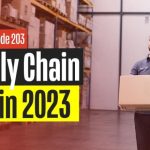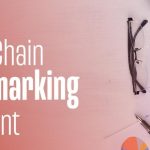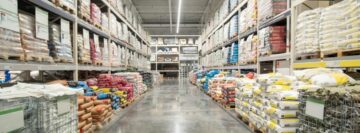
Ever wondered why some organisations succeed while others struggle with their supply chains? In fact, many organizations mess up their supply chains with the wrong networks. That’s why it’s crucial to learn to optimise your network design. You might ask, what benefits will you get from this? Watch this video as Sofia Rivas Herrera sheds light on network design and optimization and take your organization’s supply chain to the next level.
Related articles on this topic have appeared throughout our website, check them out:
Our Discussion on Distribution Networks.
Rob O’Byrne:
Distribution network design, optimizing distribution networks. It’s one of my favorite topics on this channel, and we’re going to be talking to someone about it. Coming right up.
One of my favorite topics, and we’re sharing this topic today with a guest. Let me see if I can get this right, Sofia Rivas Herrera, welcome. And your role is actually helping design and optimize distribution networks, isn’t it?
Sofia Rivas Herrera:
Yeah, that’s correct. Right now I’m doing that for HP and the global team in supply chain. And yeah, it’s something that, I think from when I did my certification at MIT, that’s where I started specializing more on the subject. And understanding the different tools out there, the different methodologies that you can use, and at the end, defining… It’s basically translating a physical problem into a mathematical model. So that’s something very interesting.
Rob O’Byrne:
Sounds like it. It’s one of my passion topics I think, because so many organizations really don’t understand how they can totally screw up their supply chain with the wrong networks. And conversely, if you get it right, you can deliver enormous benefits.
Maybe for those watching who haven’t really come across the concept before, you could tell us, in a very short summary, what is distribution network design about and what are some of the things that you try to achieve?
Sofia Rivas Herrera:
Yeah, sure. I’ll try to put it very simple, but imagine you’re-
Rob O’Byrne:
Please do. We’re simple people.
Sofia Rivas Herrera:
For simple people, right. Imagine you have a map of your physical locations, not only manufacturing centers and distribution centers, maybe crossed off there, all your final customers all mapped out. So you know where your supply chain starts and where it ends. You know where you produce, where you store, and where you deliver. You also know how you deliver, meaning, which mode of transport you use.
And for all of these, you have different capacities, not only in terms of space, of how much you can store or how much you can put into a truck or a plane or a container ship, but also in terms of how easy it is for you to satisfy an order or satisfy it in a certain period of time. We call it service level. And you can measure service level between each of these nodes because we will call each distribution, each production area or each client, a node. And when you draw a line to connect each of these nodes, at the end you’ll see a network or a web.
And what you try to do in network design and optimization, is find ways in which you can connect these dots while achieving an objective. And these objectives, most of the times, or traditionally, it has been, how can we do this while spending the least amount of money we can? So that will be your target, your objective and everything, you’ll align it to that part. And other type of objectives could be ones that are becoming more popular, which is lowering CO₂ emissions. You can have that type of objective.
And what you’ll do is, okay, this is my objective, this is what I have, this physical web and network. And additional to that, you have different type of constraints that can be internal and constraints that can be external. Maybe you have some clients that require you or request that, I don’t know, that you deliver in half pallets and not complete pallets, or that you can only deliver in a certain window of time because of weather conditions.
All these things go into a blender. This blender, I’ll use it as an analogy for a tool because obviously you can do this by hand, if the amount of nodes and amount of variables and constraints are feasible for you to do it by hand or for you to do it in Excel. But most of the times we know that your network won’t look that simple and you’ll need a more powerful tool. So this blender will be your tool. You mix it up and then you come up with a result of a combination that will help you achieve, as mostly as you can, the objective that you set.
Rob O’Byrne:
What a great summary. I love the analogy of the blender. You gave me flashbacks then, to when I studied at Cranfield University, which was way too long ago, and we had to build a network model using Excel, which was quite difficult. Thankfully now, as you say, we have lots of great tools, blenders, good analogy, where we can throw in all the variables and see what the answer is.
One of the traps, of course, and I don’t know whether you’ve come across this, is that sometimes you throw all the data into the blender and you give it a one-minute blend and the answer comes out, how do you know if the answers are accurate or not? Have you ever come across that?
Rob O’Byrne:
Sometimes it can give you the wrong answer. It’s garbage in, garbage out,
Sofia Rivas Herrera:
Yeah. And it’s that point, right? It depends what you’re throwing to the blender, because sometimes we think we’re throwing key ingredients and we’re actually, I don’t know, we left the spoon inside the blender and then you’ll just mess the result out.
But yeah, of course I’ve seen different companies and different colleagues that tell me, “We used the tool and then we didn’t get the answer that we expected.” And I think the biggest problem is this part of translating it, translating your problem into a mathematical model. And I think for this, we are missing a lot of key talents that actually know how to do that. So I think we have, well, at least that’s what I’ve seen from the people that I know, that there are very few people that actually know how to do this in a very good way.
And especially with big companies, big networks, it’s sometimes hard to keep track of, am I still on the right track? Am I still on the right path of collecting the data that I actually need for the blender? Right?
Rob O’Byrne:
I think that’s a great-
Sofia Rivas Herrera:
And the other-
Rob O’Byrne:
I think that’s a great idea, a great example of when people are studying things sometimes at university they think, “Why do I need to know this theory? Because there’s a tool that will do it for me.” But if you know the theory and you know how to do it manually, you can at least estimate what you think the answer should be, which I think is a key point.
And if you understand supply chain, you have a good idea of what answer the blender is going to spit out. If you don’t know how to do it manually, if you don’t have an idea in your head, if you don’t have the supply chain experience, it’s going to spit an answer out and you’re just going to accept it without questioning it.
Sofia Rivas Herrera:
Yeah. The other thing is a common mistake is choosing the blender without having any ingredients and without even having these data foundation that you can actually go deep for the things that you need, easily and then put it into the tool. And this happens not only in network design. I think in everything, when you select an ERP, when are looking for, I don’t know, a WMS, a transportation management system. I think many jumping into choosing which is the best tool without being ready or understanding what their actual problem is. It’s like going and buying a hammer and not knowing what thing you wanted to fix from your house.
Rob O’Byrne:
That is so true. Let’s just rewind that and say that again. It’s not about the tool, it’s… Who was it who said, “Start with the end in mind?” Was it Stephen? Covey? Yeah. I think it was.
Sofia Rivas Herrera:
We’ll look at the real reference.
Rob O’Byrne:
The guy who wrote, was it Seven Habits of Highly Successful People or something? I think it was Stephen Covey. And I’m sure one of his quotes was, “Start with the end in mind.” And that’s exactly it. Whether you’re selecting a WMS, TMS analyzing a network, what is it we want to achieve and what’s the right tool to do that?
I see that so many times when companies are selecting a WMS and they’ve got this big ERP system and it comes with a WMS module and they’re saying, “Oh yeah, we’ll just use that.” But what functionality do you need? Is that the right tool or is something you can buy off the shelf for $20,000 going to do it better for you? Yeah, I think that’s a really great observation.
What is it you enjoy, this is going to sound like a really nerdy conversation, but what is it you enjoy about network design and optimization? Because it’ll be interesting for viewers to see some of the roles and the jobs and so on, in supply chain.
Sofia Rivas Herrera:
I think what I enjoy is that nerdy part of it. I think it really ties really closely to the theory that you saw when you studied this. And I think it’s one of the few things that I say like, “Oh my God, this really has an application in real life.” Because some, I would say integrals do not play a lot of a role in my day-to-day life. They certainly opened my mind into looking at problems differently. But yeah, I think the theory from network design is something that you really use in real life and solve real life problems. And I love this idea of building scenarios and testing which one is the best.
Rob O’Byrne:
Yeah, I’ve found over the years, we’re doing this a few hundred times. It’s fascinating that you can start out analyzing a network, and you’re thinking, “This is probably going to be a good scenario. This might be a good alternative.” But the really interesting bit is when you start doing that analysis, I think, and you go, “Actually, the answer’s somewhere between these two, and it’s something that we wouldn’t even have thought of.” That the analysis uncover.
Sofia Rivas Herrera:
Yeah and you feel a chemist or like opening a lab.
Rob O’Byrne:
Yeah, that’s it. It’s like, “Who would’ve thought, that that actually looks like a really good option?”
Sofia Rivas Herrera:
I think they won’t give us any Nobel prizes here, but-
Rob O’Byrne:
No, no, no, but it’s fine.
Sofia Rivas Herrera:
But you feel that way when you finally get it right. It’s very satisfying. And the other part is, when you actually, and maybe this is not something that I enjoy a lot, because once you get the ideal scenario, the ideal solution and going into implementation, then you find out that there are other constraints that you couldn’t actually model, but will definitely change the plan that you have. And some are part of the relationships you have with your stakeholders, with your suppliers, with the internal people in your company, with even, regulations in the country or in the region, that at the end will change your plan. In such a way that-
Rob O’Byrne:
Yeah. That’s a really key point. And when we’re doing this with clients, we end up with, very often, a theoretical sort of best scenario. And we always say to them, “The theoretical one is generally not the one you’re going to go for, the optimal one,” because it might have distribution centers in areas which are not practical or that kind of thing. But it starts to point you towards the solution. And then, I think, you have to have that practical experience to say, “Well, okay, this is what the blender tells us. Reality tells us we need to just adapt that a little bit.”
Sofia Rivas Herrera:
Correct. And it’s having this flexible mindset that, at the end, you will still need to modify it again for it to actually happen and letting go of this perfection that you found.
Rob O’Byrne:
That’s right.
Sofia Rivas Herrera:
Maybe that’s not that nice, but…
Rob O’Byrne:
Well, there you go. Sofia, thank you very much for sharing your thoughts on distribution network design. Who knew it could be so fascinating. Maybe we’re going to encourage some people to not only get into supply chain, but get into this area of analytics, as well.
Sofia Rivas Herrera:
Yeah. And if I may say something else? Network design is and will be playing a key role in the upcoming years, and that’s because, one, it’s becoming trending topic because of sustainability. So one way to achieve a sustainable future and your sustainable targets in your supply chain is true network design. So if you’re passionate about these two topics or at least one, you can make sure that you’ll have an interesting career in the upcoming years.
And the other thing is that, with AI, hopefully it will be accelerated even more. But still do study the theory because we don’t want any AI to drive us, to make us think that we have the answer without even testing it. But I think, this field will grow a lot in the future, in the upcoming future.
Rob O’Byrne:
Yeah, no, that’s good. I’ve had a look at AI for some of these solution developments and there’s a lot of potential there, but I think with any of these things, you’ve got to know broadly, what’s the answer going to look like? Because I need to know whether it’s sending me in the right direction or not. But it can help us. Certainly, it can help you uncover solutions that you might not have thought of.
Sofia Rivas Herrera:
Correct.
Rob O’Byrne:
But again, it’s always, be careful what you put in: garbage in, garbage out. So knowing what to put in the mixer is the really important bit, I think.
Sofia Rivas Herrera:
That is right.
Rob O’Byrne:
Okay. Sofia, thank you so much for joining us. If you want to know more about network design, I’ll put a playlist link down below the video because there’s loads of videos on the topic, on the channel, more sort of theoretical stuff. Great to talk to you, Sofia, about the broader interest element, I think, of network design and why it’s such a fascinating field. Thanks for joining us.
Sofia Rivas Herrera:
Thank you for having me.
- SEO Powered Content & PR Distribution. Get Amplified Today.
- PlatoData.Network Vertical Generative Ai. Empower Yourself. Access Here.
- PlatoAiStream. Web3 Intelligence. Knowledge Amplified. Access Here.
- PlatoESG. Carbon, CleanTech, Energy, Environment, Solar, Waste Management. Access Here.
- PlatoHealth. Biotech and Clinical Trials Intelligence. Access Here.
- Source: https://www.logisticsbureau.com/network-design-and-optimisation-a-user-perspective/
- :has
- :is
- :not
- :where
- $UP
- 000
- a
- About
- about IT
- accelerated
- Accept
- accurate
- Achieve
- achieving
- across
- actual
- actually
- adapt
- Additional
- again
- ago
- AI
- align
- All
- also
- alternative
- always
- am
- amount
- an
- analysis
- analytics
- analyzing
- and
- answer
- answers
- any
- appeared
- Application
- ARE
- AREA
- areas
- AS
- ask
- At
- Basically
- BE
- because
- becoming
- been
- before
- being
- below
- benefits
- BEST
- Better
- between
- Big
- Biggest
- Bit
- Blend
- Blender
- broader
- broadly
- build
- Building
- but
- buy
- Buying
- by
- call
- CAN
- Can Get
- capacities
- Career
- careful
- Centers
- certain
- certainly
- Certification
- chain
- chains
- change
- Channel
- check
- choosing
- client
- clients
- closely
- colleagues
- Collecting
- combination
- come
- comes
- coming
- Common
- Companies
- company
- complete
- concept
- conditions
- Connect
- constraints
- Container
- Conversation
- conversely
- correct
- could
- country
- course
- Crossed
- crucial
- Customers
- data
- day-to-day
- deep
- definitely
- deliver
- depends
- Design
- developments
- DID
- different
- differently
- difficult
- direction
- discussion
- Display
- distribution
- do
- doing
- Dont
- down
- draw
- drive
- each
- easily
- easy
- element
- else
- Emissions
- encourage
- end
- ends
- enjoy
- enormous
- ERP
- especially
- estimate
- Ether (ETH)
- Even
- EVER
- everything
- exactly
- example
- Excel
- expected
- experience
- external
- fact
- fascinating
- Favorite
- feasible
- feel
- few
- field
- final
- Finally
- Find
- fine
- Fix
- flexible
- For
- found
- Foundation
- from
- functionality
- future
- gave
- generally
- get
- Give
- Global
- Go
- God
- going
- good
- got
- great
- Grow
- Guest
- Guy
- habits
- had
- Half
- hammer
- hand
- happen
- happens
- Hard
- Have
- having
- head
- help
- helping
- here
- Hidden
- highly
- his
- Hopefully
- House
- How
- How To
- HP
- HTTPS
- hundred
- i
- I’LL
- idea
- ideal
- if
- imagine
- implementation
- important
- in
- ingredients
- inside
- interest
- interesting
- internal
- into
- IT
- IT service
- Jobs
- joining
- joining us
- jpg
- just
- Keep
- Key
- Kind
- knew
- Know
- Knowing
- lab
- LEARN
- least
- left
- let
- letting
- Level
- Life
- light
- like
- Line
- LINK
- little
- loads
- locations
- Long
- Look
- look like
- looking
- LOOKS
- Lot
- lots
- love
- lowering
- make
- management
- management system
- manually
- manufacturing
- many
- map
- mathematical
- May..
- maybe
- me
- meaning
- measure
- methodologies
- might
- mind
- Mindset
- missing
- mistake
- MIT
- mix
- mixer
- Mode
- model
- modify
- module
- money
- more
- most
- mostly
- much
- my
- Need
- network
- networks
- next
- nice
- no
- nobel
- node
- nodes
- now
- objective
- objectives
- observation
- of
- off
- often
- Okay
- on
- once
- ONE
- ones
- only
- opened
- opening
- optimal
- optimise
- optimization
- Optimize
- optimizing
- Option
- or
- order
- Organisations
- organizations
- Other
- Others
- our
- out
- over
- pallets
- part
- passion
- passionate
- path
- People
- perfection
- period
- physical
- plan
- plane
- plato
- Plato Data Intelligence
- PlatoData
- Play
- player
- playing
- Point
- Popular
- potential
- powerful
- Practical
- prizes
- probably
- Problem
- problems
- produce
- Production
- put
- quite
- quotes
- ready
- real
- real life
- Reality
- really
- reference
- region
- regulations
- Relationships
- request
- require
- result
- Rewind
- right
- Role
- roles
- Said
- satisfy
- saw
- say
- saying
- scenario
- scenarios
- see
- seen
- select
- selecting
- sending
- service
- set
- seven
- sharing
- Shelf
- Short
- should
- Simple
- So
- solution
- Solutions
- SOLVE
- some
- Someone
- something
- sometimes
- somewhere
- sort
- Sound
- Space
- specializing
- Spending
- stakeholders
- start
- started
- starts
- Stephen
- Still
- store
- Struggle
- studied
- Study
- Studying
- stuff
- subject
- succeed
- successful
- such
- SUMMARY
- suppliers
- supply
- supply chain
- Supply chains
- sure
- Sustainability
- sustainable
- sustainable future
- system
- Take
- talents
- Talk
- talking
- Target
- targets
- team
- tell
- tells
- terms
- Testing
- thank
- thanks
- that
- The
- The Future
- their
- Them
- then
- theoretical
- theory
- There.
- These
- they
- thing
- things
- Think
- Thinking
- this
- those
- thought
- throughout
- throw
- Throwing
- Ties
- time
- times
- to
- today
- too
- tool
- tools
- topic
- Topics
- TOTALLY
- towards
- track
- traditionally
- transport
- transportation
- traps
- trending
- truck
- true
- try
- two
- type
- uncover
- understand
- understanding
- university
- upcoming
- us
- use
- used
- using
- variables
- very
- Video
- Videos
- viewers
- want
- wanted
- was
- Watch
- watching
- Way..
- ways
- we
- Weather
- web
- Website
- welcome
- WELL
- What
- What is
- when
- whether
- which
- while
- WHO
- why
- will
- window
- with
- without
- WMS
- would
- Wrong
- wrote
- years
- you
- Your
- youtube
- zephyrnet












